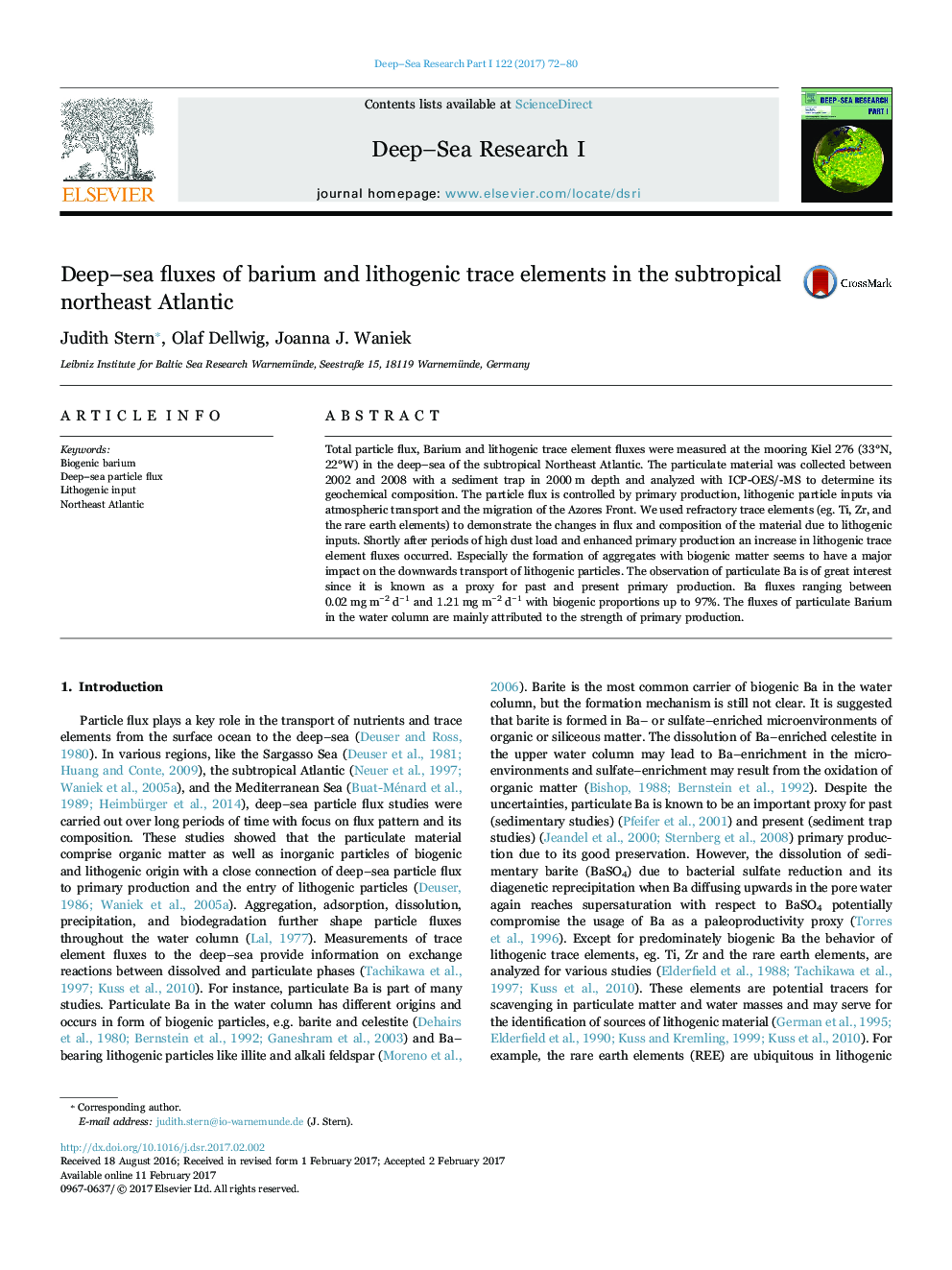| Article ID | Journal | Published Year | Pages | File Type |
|---|---|---|---|---|
| 5764756 | Deep Sea Research Part I: Oceanographic Research Papers | 2017 | 9 Pages |
â¢Long-term observation of particle flux in the subtropical NE Atlantic (33°N, 22°W).â¢Atmospheric input and aggregation with biogenic matter drive Lithogenic fluxes.â¢Particulate Ba fluxes are highly variable depending on primary production.
Total particle flux, Barium and lithogenic trace element fluxes were measured at the mooring Kiel 276 (33°N, 22°W) in the deep-sea of the subtropical Northeast Atlantic. The particulate material was collected between 2002 and 2008 with a sediment trap in 2000 m depth and analyzed with ICP-OES/-MS to determine its geochemical composition. The particle flux is controlled by primary production, lithogenic particle inputs via atmospheric transport and the migration of the Azores Front. We used refractory trace elements (eg. Ti, Zr, and the rare earth elements) to demonstrate the changes in flux and composition of the material due to lithogenic inputs. Shortly after periods of high dust load and enhanced primary production an increase in lithogenic trace element fluxes occurred. Especially the formation of aggregates with biogenic matter seems to have a major impact on the downwards transport of lithogenic particles. The observation of particulate Ba is of great interest since it is known as a proxy for past and present primary production. Ba fluxes ranging between 0.02 mg mâ2 dâ1 and 1.21 mg mâ2 dâ1 with biogenic proportions up to 97%. The fluxes of particulate Barium in the water column are mainly attributed to the strength of primary production.
